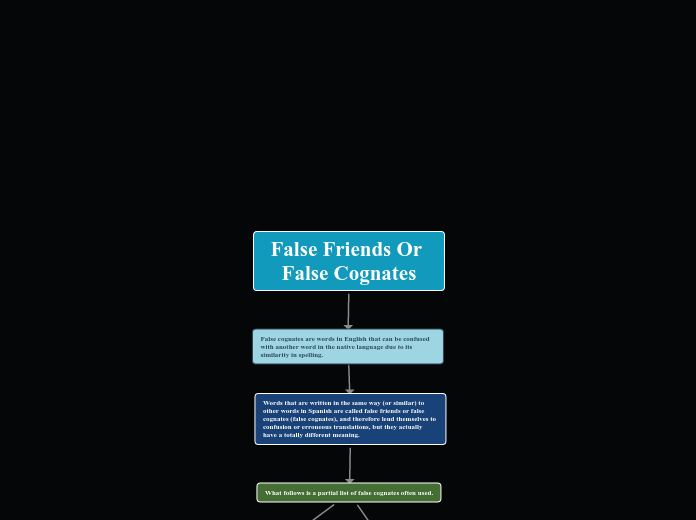The Elements of Culture
Culture was defined earlier as the symbols, language, beliefs, values, and artifacts that are part of any society. As this definition suggests, there are two basic components of culture: ideas and symbols on the one hand and artifacts (material objects) on the other. The first type, called nonmaterial culture, includes the values, beliefs, symbols, and language that define a society. The second type, called material culture, includes all the society’s physical objects, such as its tools and technology, clothing, eating utensils, and means of transportation. These elements of culture are discussed next.
Type in the name of the story or historical event you are planning to summarize.
Artifacts
The last element of culture is the artifacts, or material objects, that constitute a society’s material culture. In the most simple societies, artifacts are largely limited to a few tools, the huts people live in, and the clothing they wear. One of the most important inventions in the evolution of society was the wheel.
Figure 2.16 "Primary Means of Moving Heavy Loads"
shows that very few of the societies in the SCCS use wheels to move heavy loads over land, while the majority use human power and about one-third use pack animals.
Values
Values are another important element of culture and involve judgments of what is good or bad and desirable or undesirable. A culture’s values shape its norms. In Japan, for example, a central value is group harmony. The Japanese place great emphasis on harmonious social relationships and dislike interpersonal conflict.
A solution is found for the problem or challenge.
United States
In the United States, of course, the situation is quite different. The American culture extols the rights of the individual and promotes competition in the business and sports worlds and in other areas of life. Lawsuits over the most frivolous of issues are quite common and even expected. Phrases like “Look out for number one!” abound. If the Japanese value harmony and group feeling, Americans value competition and individualism.
Japan
The Japanese value system is a bit of an anomaly, because Japan is a modern nation with very traditional influences. Its emphasis on group harmony and community is more usually thought of as a value found in preindustrial societies, while the U.S. emphasis on individuality is more usually thought of as a value found in modern cultures.
What was the solution to the problem? Type it in.
Rituals
Different cultures also have different rituals, or established procedures and ceremonies that often mark transitions in the life course. As such, rituals both reflect and transmit a culture’s norms and other elements from one generation to the next. Initiation and commencement ceremonies in colleges and universities are familiar examples of time-honored rituals. In many societies, rituals help signify one’s gender identity.
Resolution is the part of the story's plot where the main problem is resolved or worked out.
Girls Rituals
For example, girls around the world undergo various types of initiation ceremonies to mark their transition to adulthood. Among the Bemba of Zambia, girls undergo a month-long initiation ceremony called the chisungu, in which girls learn songs, dances, and secret terms that only women know (Maybury-Lewis, 1998).Maybury-Lewis, D. (1998). Tribal wisdom. In K. Finsterbusch (Ed.), Sociology 98/99 (pp. 8–12). Guilford, CT: Dushkin/McGraw-Hill. In some cultures, special ceremonies also mark a girl’s first menstrual period. Such ceremonies are largely absent in the United States, where a girl’s first period is a private matter. But in other cultures the first period is a cause for celebration involving gifts, music, and food (Hathaway, 1997).Hathaway, N. (1997). Menstruation and menopause: Blood rites. In L. M. Salinger (Ed.), Deviant behavior 97/98 (pp. 12–15). Guilford, CT: Dushkin.
Boys Rituals
Boys have their own initiation ceremonies, some of them involving circumcision. That said, the ways in which circumcisions are done and the ceremonies accompanying them differ widely. In the United States, boys who are circumcised usually undergo a quick procedure in the hospital. If their parents are observant Jews, circumcision will be part of a religious ceremony, and a religious figure called a moyel will perform the circumcision. In contrast, circumcision among the Maasai of East Africa is used as a test of manhood. If a boy being circumcised shows signs of fear, he might well be ridiculed (Maybury-Lewis, 1998).Maybury-Lewis, D. (1998). Tribal wisdom. In K. Finsterbusch (Ed.), Sociology 98/99 (pp. 8–12). Guilford, CT: Dushkin/McGraw-Hill.
And then what happened?
What is the ending of the story or event? Type it in.
Changing Norms and Beliefs
Our examples show that different cultures have different norms, even if they share other types of practices and beliefs. It is also true that norms change over time within a given culture. A more important topic on which norms have changed is abortion and birth control (Bullough & Bullough, 1977).Bullough, V. L., & Bullough, B. (1977). Sin, sickness, and sanity: A history of sexual attitudes. New York, NY: New American Library. Despite the controversy surrounding abortion today, it was very common in the ancient world. Much later, medieval theologians generally felt that abortion was not murder if it occurred within the first several weeks after conception.
Other types of cultural beliefs also change over time. Since the 1960s, the U.S. public has changed its views about some important racial and gender issues. Taken from several years of the General Social Survey (GSS), shows that the percentage of Americans who would vote for a qualified black person as president rose almost 20 points from the early 1970s to the middle of 1996, when the GSS stopped asking the question. If beliefs about voting for an African American had not changed, Barack Obama would almost certainly not have been elected in 2008.
Norms
Cultures differ widely in their norms, or standards and expectations for behaving. We already saw that how people behave when drunk stems from society’s expectations of how they should behave when drunk. Norms of drunken behavior influence how we behave when we drink too much. Many norms differ dramatically from one culture to the next. For example, Although many societies disapprove of homosexuality, other societies accept it. This difference illustrates the importance of culture for people’s attitudes
This is the But moment in the story or event, when one or several issues arise, messing up the character's plans.
Formal Norms
Formal norms, also called mores (MOOR-ays) and laws, refer to the standards of behavior considered the most important in any society. Examples in the United States include traffic laws, criminal codes, and, in a college context, student behavior codes addressing such things as cheating and hate speech.
Informal Norms
Informal norms, also called folkways and customs, refer to standards of behavior that are considered less important but still influence how we behave. Table manners are a common example of informal norms, as are such everyday behaviors as how we interact with a cashier and how we ride in an elevator.
What is the conflict or problem that has occurred? Type it in.
Language
Perhaps our most important set of symbols is language. As long as we agree how to interpret words, a shared language and thus society are possible. By the same token, differences in languages can make it quite difficult to communicate. For example, imagine you are in a foreign country where you do not know their language and they do not know yours. Worse yet, you forgot to bring your dictionary that translates their language into yours, and vice versa, and your iPhone battery has died. You become lost. How will you get help? What will you do? Is there any way to communicate your plight? As this scenario suggests, language is crucial to communication and thus to any society’s culture. Children learn language from their culture just as they learn about shaking hands, about gestures, and about the significance of the flag and other symbols. Humans have a capacity for language that no other animal species possesses. Our capacity for language in turn helps make our complex culture possible.
This is the Wanted component in the story and it refers to what your character planned on doing in this story or event.
Written
One of the most important developments in the evolution of society was the creation of written language. Some of the preindustrial societies that anthropologists have studied have written language, while others do not, and in the remaining societies the “written” language consists mainly of pictures, not words.
Spoken
What are the character's plans? Type them in.
Symbols
Every culture is filled with symbols, or things that stand for something else and that often evoke various reactions and emotions. Some symbols are actually types of nonverbal communication, while other symbols are in fact material objects.
It can be a person, an animal, a monster, a figure, an item, and it is the centerpiece of the entire story.
Who is the main character in the story? Type in his/her name.
Object Symbols
Here the U.S. flag is a prime example. For most Americans, the flag is not just a piece of cloth with red and white stripes and white stars against a field of blue. Instead, it is a symbol of freedom, democracy, and other American values and, accordingly, inspires pride and patriotism. Other objects have symbolic value for religious reasons. Three of the most familiar religious symbols in many nations are the cross, the Star of David, and the crescent moon, which stand for Christianity, Judaism, and Islam, respectively. Whereas many cultures attach no religious significance to these shapes, for many people across the world they evoke very strong feelings of religious faith.
Non-verbal symbols
A common one is shaking hands, which is done in some societies but not in others. It commonly conveys friendship and is used as a sign of both greeting and departure. Probably all societies have nonverbal symbols we call gestures, movements of the hand, arm, or other parts of the body that are meant to convey certain ideas or emotions. However, the same gesture can mean one thing in one society and something quite different in another society (Axtell, 1998).Axtell, R. E. (1998).









